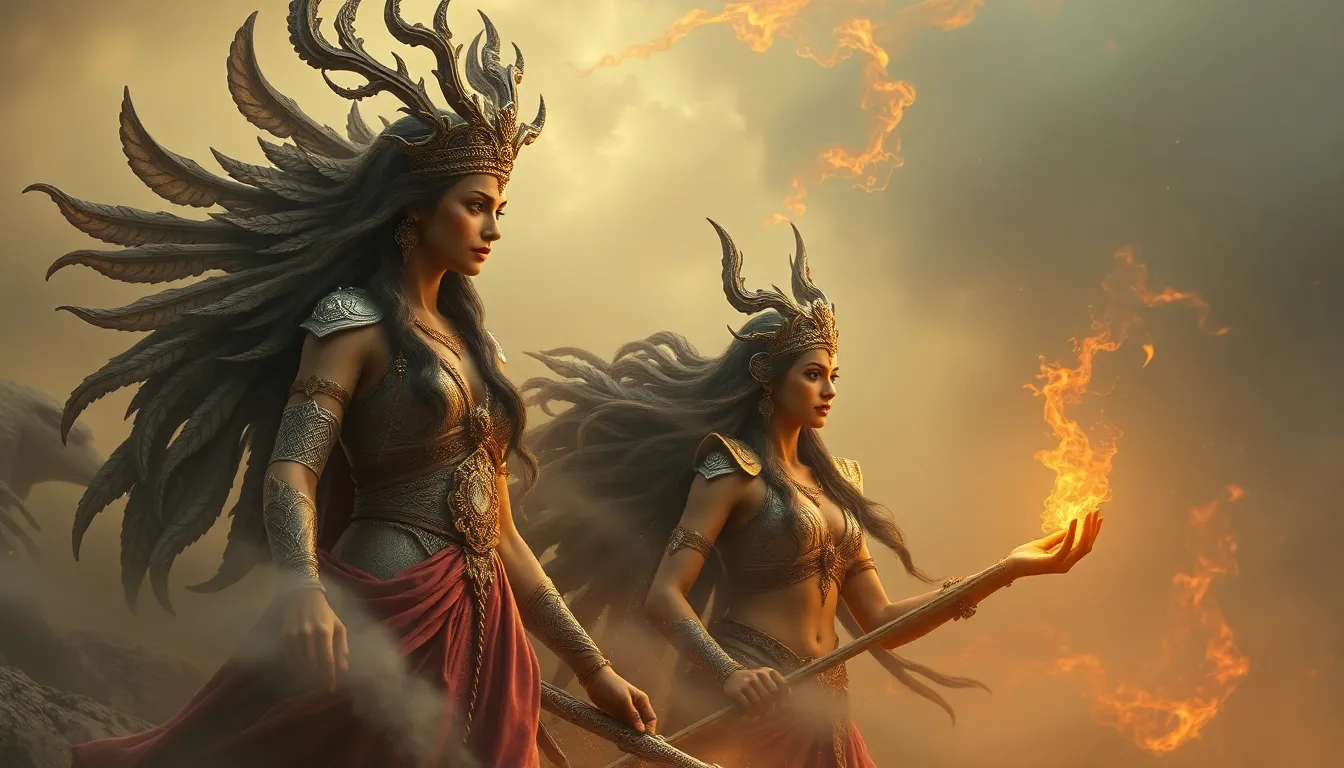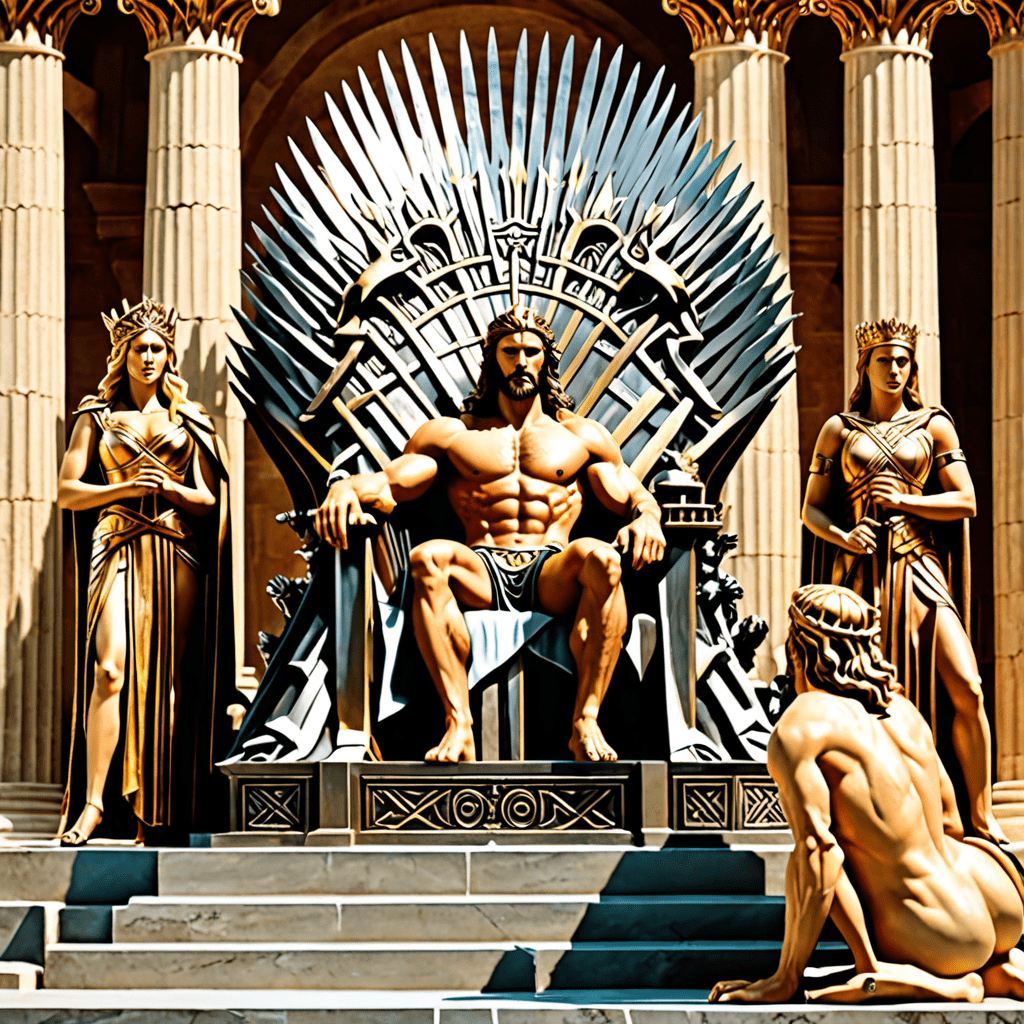The Most Beautiful Ancient Goddesses and Their Enchanting Myths
Introduction to Ancient Goddesses
Throughout history, ancient cultures have revered goddesses as embodiments of beauty, love, fertility, and power. These divine figures played significant roles in mythology, often representing the ideals and values of the societies that worshiped them. The tales of these goddesses not only highlight their enchanting beauty but also explore the complexities of femininity within mythological narratives. As symbols of various aspects of life, ancient goddesses inspire awe and reverence, showcasing the profound impact of beauty on culture, religion, and human experience.
Aphrodite: The Goddess of Love and Beauty
Aphrodite, the Greek goddess of love and beauty, has captivated hearts and imaginations since her inception. According to mythology, she was born from the sea foam and emerged near Cyprus, symbolizing the connection between beauty and nature. Her origins reflect the idea that beauty can arise from chaos and transformation.
One of the most famous myths involving Aphrodite is the Judgment of Paris. In this tale, Paris, a Trojan prince, was tasked with deciding who among the goddesses Hera, Athena, and Aphrodite was the fairest. Each goddess offered him a bribe, but Paris ultimately chose Aphrodite, swayed by her promise of the love of the most beautiful mortal, Helen of Sparta. This choice sparked the events leading to the Trojan War, illustrating how beauty can influence mortal affairs.
Aphrodite is often depicted with symbols such as roses, doves, and mirrors, which represent love, peace, and self-reflection. Her cultural representations extend to art, literature, and modern media, where she continues to embody the ideal of beauty and romantic love.
Isis: The Egyptian Mother Goddess
In ancient Egypt, Isis was revered as a powerful mother goddess, associated with magic, healing, and fertility. She was the wife of Osiris and played a crucial role in his resurrection after he was murdered by his brother Set. The myth of Isis’s devotion to Osiris highlights her protective nature and the strength of maternal love.
Isis is often depicted nursing her son, Horus, symbolizing motherhood and the nurturing aspect of femininity. Her worship extended throughout Egypt and beyond, influencing various cultures and religions. She became a symbol of hope and resilience, as her story reflects the themes of life, death, and rebirth, which resonate deeply in human experience.
Venus: The Roman Adaptation of Aphrodite
Venus, the Roman counterpart to Aphrodite, shares many of the same attributes but also embodies different cultural aspects. In Roman mythology, Venus was not only the goddess of love and beauty but also a vital force in matters of war and victory. This duality reflects the Romans’ pragmatic view of love and beauty as essential elements of both personal and societal success.
One of the notable myths involving Venus is her romantic relationship with Mars, the god of war. Their love story is a testament to the intertwining of beauty and strength, illustrating how love can flourish even in the midst of conflict. Venus was also celebrated in various festivals, such as the Veneralia, where she was honored for her role in love and fertility.
Artistic representations of Venus often depict her as an idealized figure of beauty, inspiring countless artists throughout history. From the famous paintings of the Renaissance to modern interpretations, Venus remains a symbol of love’s power and allure.
Kuan Yin: The Bodhisattva of Compassion
Kuan Yin, known as the Bodhisattva of Compassion in Chinese mythology, represents a different facet of beauty—one rooted in kindness and empathy. She is often depicted as a serene figure, embodying the virtues of compassion and mercy. Kuan Yin’s myths tell of her transformation from a mortal woman into a divine being, reflecting her commitment to helping others.
One of the key stories surrounding Kuan Yin is her decision to postpone her own enlightenment to assist those in suffering. This act of selflessness highlights the belief that true beauty lies in the compassion one shows to others. Her presence in various cultures emphasizes the importance of kindness as a form of beauty that transcends physical appearance.
Freya: The Norse Goddess of Love and War
In Norse mythology, Freya is celebrated as a complex goddess of love, beauty, war, and magic. She is known for her stunning beauty and her magical necklace, Brísingamen, which enhances her allure. Freya’s character embodies both the nurturing aspects of femininity and the fierce attributes of a warrior.
Freya’s myths include tales of her involvement in battles and her ability to choose those who would die and those who would live, showcasing her duality as a goddess of love and war. Her influence extended to the values of Norse culture, where beauty was often associated with strength and resilience.
Lakshmi: The Goddess of Wealth and Prosperity
Lakshmi is a revered goddess in Hindu mythology, symbolizing wealth, prosperity, and beauty. She is often depicted sitting or standing on a lotus flower, radiating grace and abundance. The stories of Lakshmi’s emergence during the churning of the ocean, known as Samudra Manthan, illustrate her divine origins and connection to prosperity.
Lakshmi’s worship is central to many Hindu festivals, especially Diwali, where she is invited into homes to bless families with wealth and happiness. Her beauty is not just physical; it is also reflected in the abundance and prosperity she brings into people’s lives.
Diana: The Roman Goddess of the Hunt
Diana, the Roman goddess of the hunt, wilderness, and the moon, is often depicted as a strong and independent figure. She is associated with nature and the protection of wildlife, embodying a beauty that is both fierce and nurturing. Diana’s myths include the transformation of Actaeon, a hunter who stumbled upon her bathing, leading to his tragic fate, which serves as a cautionary tale about respect for nature and the divine.
Her vow of chastity and commitment to protecting her domain emphasize the strength and autonomy of women in mythology. Diana has been represented in art and literature as a symbol of the wild beauty of nature and the power of female independence.
Brigid: The Celtic Goddess of Fire and Fertility
Brigid is a prominent figure in Celtic mythology, associated with fire, fertility, poetry, and healing. She represents the creative and transformative aspects of beauty, inspiring artists and healers alike. Myths surrounding Brigid highlight her connection to the earth and the cycles of life, reflecting the beauty found in creation and renewal.
Brigid is often depicted as a radiant figure, symbolizing inspiration and creativity. Her association with various crafts, including smithing and poetry, illustrates the belief that beauty can manifest in many forms, from the written word to the forged metal.
Conclusion
The ancient goddesses explored in this article represent a diverse array of attributes and significances, all tied together by the themes of beauty, love, and femininity. Each goddess, from Aphrodite to Brigid, illustrates how beauty transcends physical appearance, encompassing compassion, strength, creativity, and nurturing. Their enchanting myths continue to resonate through time, reminding us of the powerful role of femininity in cultural narratives and the enduring impact of these divine figures on our understanding of beauty.



